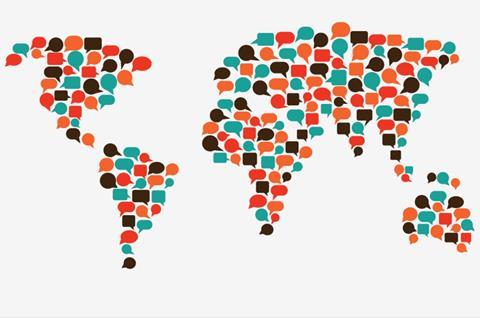
Imagine walking into a duty-free store at an airport in a different country to buy something, and instead of struggling with an array of translation apps or using sign language with the storekeeper, all you do is scan a label with your smartphone and get all information in your desired language. All at the flick of a smartphone.
The world is in a constant flux, subject to shifts in population and culture. As countries cease being homogenous entities, brands need to be agile and innovative to stay competitive and navigate in this new cosmopolitan and global environment. Add to the mix more and more regulations being introduced by regulatory authorities and governments to bring in more consumer transparency. For example, EU countries require all medical devices to have labels in languages of its member states. We are also currently witnessing one of the largest human migrations in Europe, large sections of whom speak no European language.
Multilingual countries like Belgium and Canada have regulations in place to ensure their linguistic diversity is reflected on all labels and packaging within their territories. A whopping 1.323 billion tourists made landfall on international lands in the year 2017. Many of these visitors find shopping overseas difficult due to language barriers.
Packaging is an important conduit to convey product information to the consumer and several people struggle to buy simple things due lack of proficiency in one particular language. Producing labels and packaging in a single language isolates the brand from linguistic minorities, which form considerably large communities in countries like U.S.A and Canada. Capitalising on multilingual labelling and embracing linguistic minorities will allow brands to incorporate them into their market shares and expand their consumer base. Currently, pharmaceutical companies are leading the way in committing to multilingual digital labels in order to promote safer consumption amongst consumers with limited English language proficiency.
But physical packaging have only so much real estate to work with, to not only put all relevant product information but in multiple languages as well. So how do brands go about balancing changing cultural and linguistic norms as well as government imposed norms while ensuring consumer transparency.
How can Digital Labelling and Smart Packaging help
Localisation of a product label for a particular community is a complex workflow with many considerations to deliberate over - relevant information, translations, design and printing, all the while ensuring they are culturally appropriate. The most commonly seen end result is a chaotic label with overcrowded text without any coherence.
The logical step from this point is into the digital realm. Digital Labels solve the issue of incorporating information in multiple languages as well as providing plenty of space to make that information visible in a coherent and attractive format.
How does it work
Digital labelling involves using electronic triggers on product packaging such as QR codes, data matrix, 2D barcodes, image recognition or NFC stickers that can be activated through smartphone applications or internet enabled devices. On interacting with these triggers, the application or device will take the customer to a product specific web interaction with all product information in their language of preference which the app will detect from the phone’s web browser. For example, if your phone’s language preference is Korean, the digital label will be rendered in Korean, personalising your view of the product information.
Smart Packaging will also allow brands the power to rapidly make changes and edits to label content without enduring the lofty costs associated with reprinting and repackaging.
Brands need to encompass minority segments by tailoring products to meet their requirements in order to explore new markets and opportunities and maintain market leadership. However it is challenging to design captivating packaging which integrates all relevant information and in multiple languages on limited physical space. Digital Smart Packaging will enable brands to digitise all label content on packaging in as many languages as they want without worrying about space. Consumers will have instant access to all information regarding the product in the language of their choice on their smartphones.















